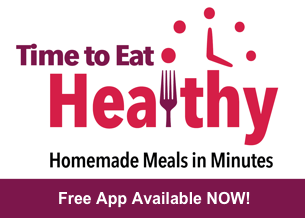The New and Improved School Lunch
By : Jodie Shield | 0 Comments | On : August 27, 2012 | Category : Adults, Kids, Teens
How to Avoid a Food Fight!
By: Jodie Shield, RD
Have you checked out the school cafeteria? They’re here – new and improved school lunches. This year the first phase of the Healthy Hunger-Free Kids Act kicks in for public elementary, middle, and high schools. The law requires the USDA to update the National School Lunch Program (NSLP) meal patterns and nutrition standards so that they mirror current health recommendations. While parents may love the healthier cafeteria cuisine, many kids are finding it, well, hard to swallow. Here’s the scoop about what you can expect to see – and not see – on your child’s lunch plate. Plus, you’ll find some tips to make sure those carrot sticks and whole-wheat spaghetti noodles end up in your student’s mouth rather than the trash.
What’s on the new new menu? While many food items will remain the same such as pizza and tacos, the ingredients and portion sizes will change. (Click here to see how the new lunch menus compare to the old menus.) Here’s what the new regulations will require schools to do:
- Offer fruits and vegetables every day (twice as much as before) with emphasis on fresh produce.
- Provide a minimum and maximum amount of calories for each grade level that can be averaged out over the week. So portion sizes will be smaller, but kids will still be getting the appropriate calories and nutrients for their age
- Increase the amount of whole-grain in foods such as bread, pasta, and pizza crust. This first year half the grains offered must be whole grain; by 2014 all grains will have to be whole grain rich – that is the first or second item listed on the ingredient label must be a whole grain.
- Reduce the amount of sodium by 50% over the next three years.
- Limit the saturated fat that comes from many meat and dairy items to 10% or less of total calories averaged over the week; Trans Fats are no longer allowed.
- Provide only 1% low-fat milk or fat-free milk. Flavored milk such as chocolate milk may be served but it must be fat-free.
Why all of the changes? It’s been fifteen years since the NSLP has been updated. Not to mention, that over the past few decades kids weights have sky rocketed. Nowadays one out of every three kids is overweight or obese. While the school lunch program is not the main culprit responsible for the childhood obesity epidemic, it does have the potential to be a big part of the solution. Targeting improvements to the NSLP has the potential to help millions of American children. Currently 31 million kids partake in the NSLP each day. And unlike in the past, the new law makes sure that the NSLP menus are in harmony with the 2010 Dietary Guidelines for Americans – science based recommendations to help everyone over the age of two promote health and prevent disease. And there is more to come. Next year the National School Breakfast Program (NSBP) will undergo a healthy makeover. In addition, the USDA is planning on establishing healthier standards for a la carte foods served in schools too.
As a Registered Dietitian and parent, I am thrilled at the nutrition education opportunity the new and improved school lunches offer to families. Kids will be able to take the lessons they learn in the lunchroom back home where they can be reinforced with their families. But I am also a realist. As with all change, it takes time to embrace it. So parents, if your child comes home from school saying “I’m hungry!” or “That taco was nasty!” What can you do? Here are a few tips to help kids enjoy their new and improved school lunch:
- Give them a heads up. Talk to your son or daughter about the changes to the school lunch menus. Help them understand that eating these foods such as fruits, vegetables and whole grains will help them be healthier, give them energy to play and help them concentrate and perform better in the classroom.
- Try it, you’ll like it. Encourage kids to taste the new foods and be patient. Research shows it can take up to ten tries before some kids will even take a bite. Ask them for feed back about how they like the whole wheat bread or sweet potato fries. Discuss which fruit is their favorite? And be sure to give them positive reinforcement for trying new foods.
- Do your home work. Find out what foods your school is serving. Most school districts post their menus online. Make sure you offer some of those items at home. Many schools are planning to offer recipes so families can try them at home.
- Bring your own lunch. If all else fails and your child doesn’t want anything to do with the new school menus, go ahead and let them bring their own lunch. Just be sure your child’s brown bag or lunch box meal is a healthy alternative.






